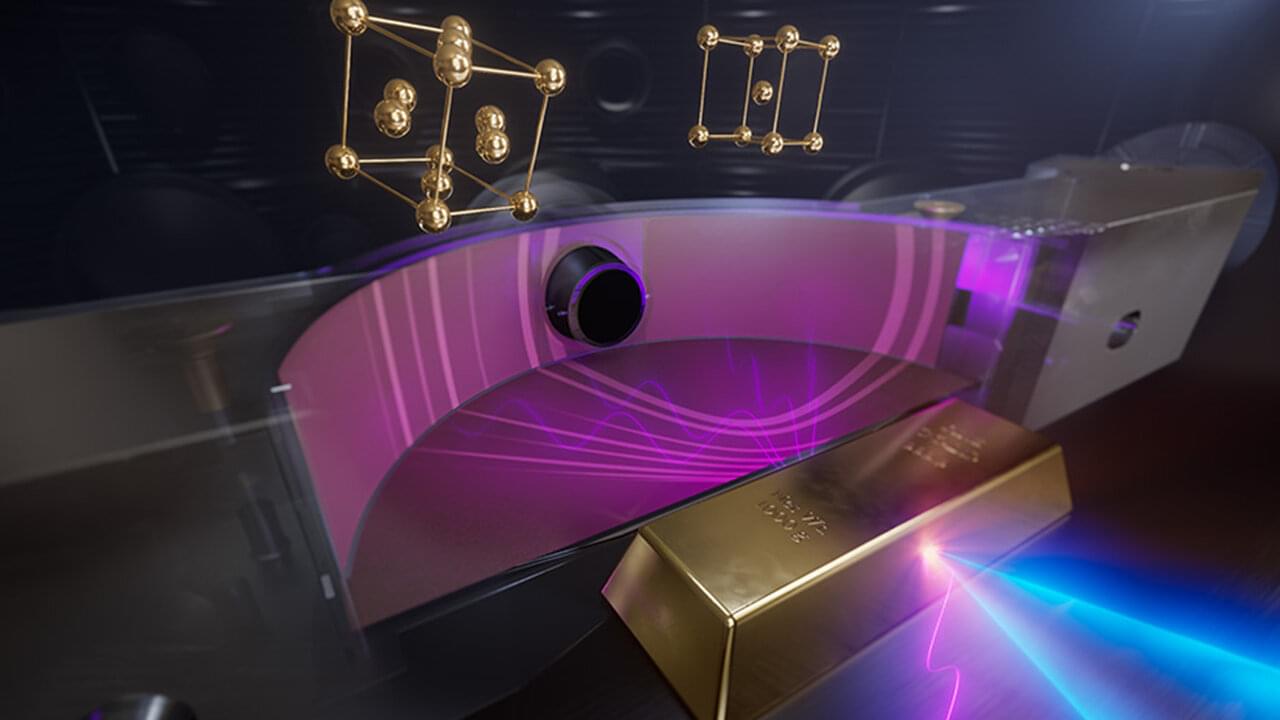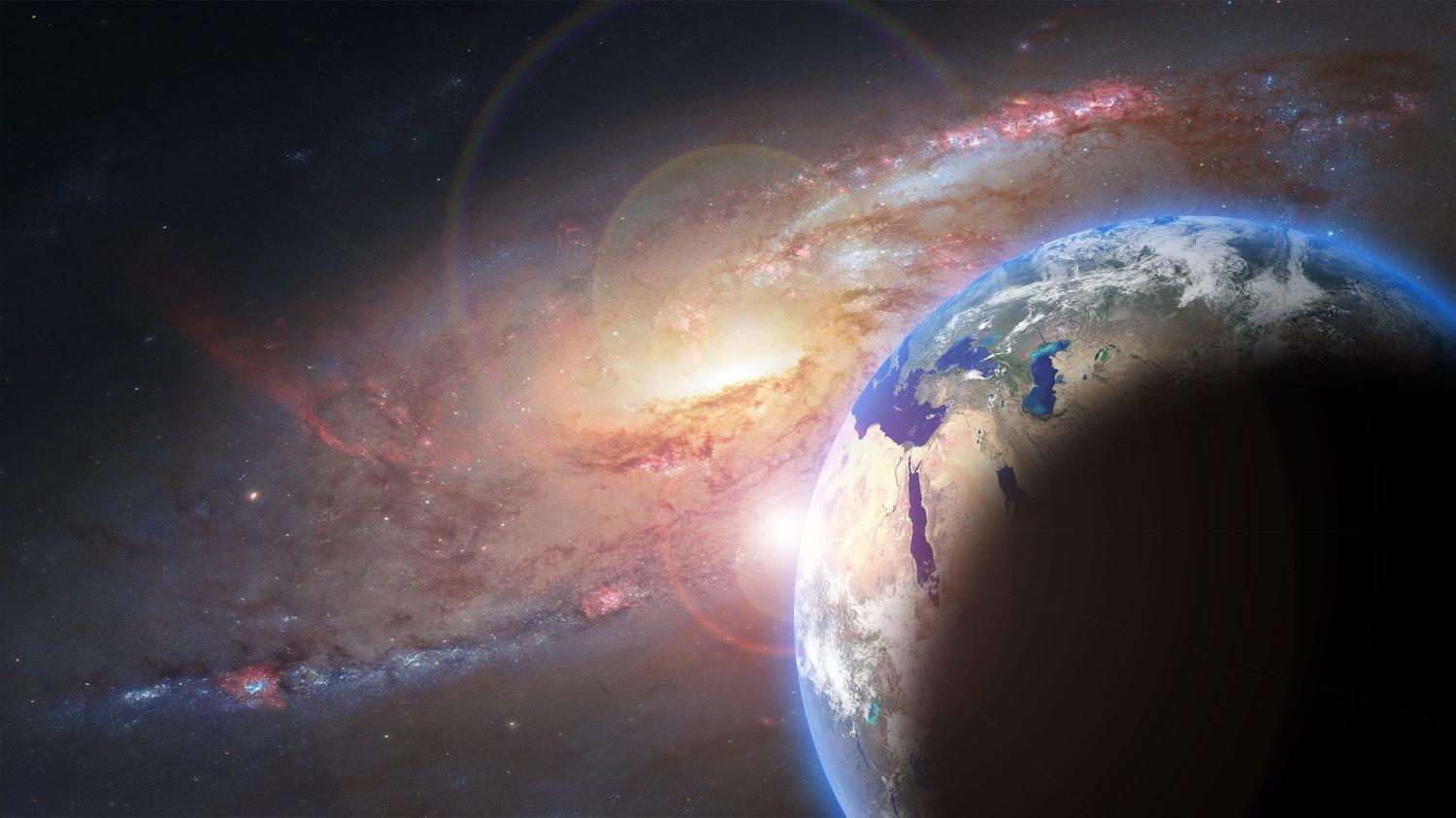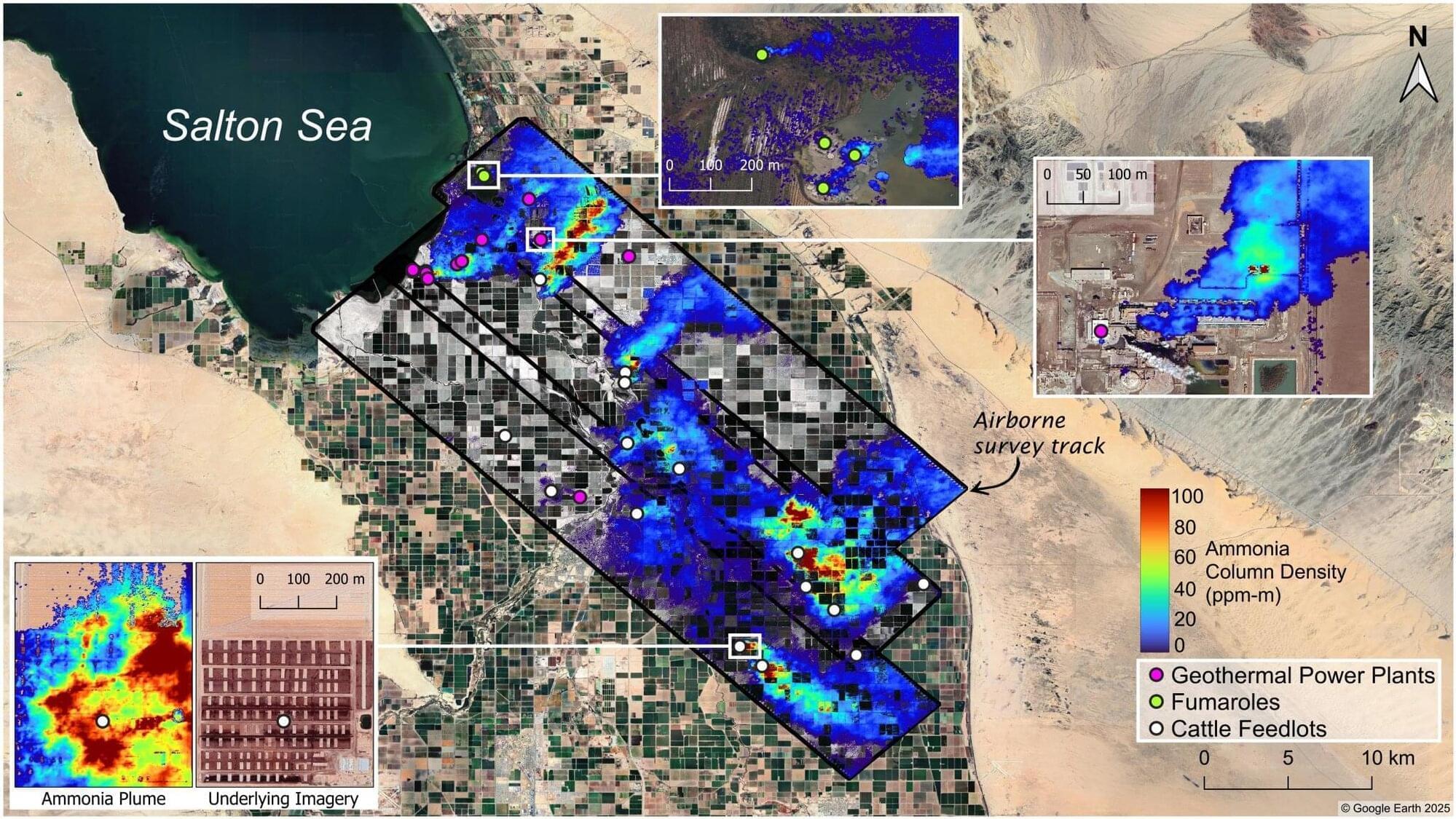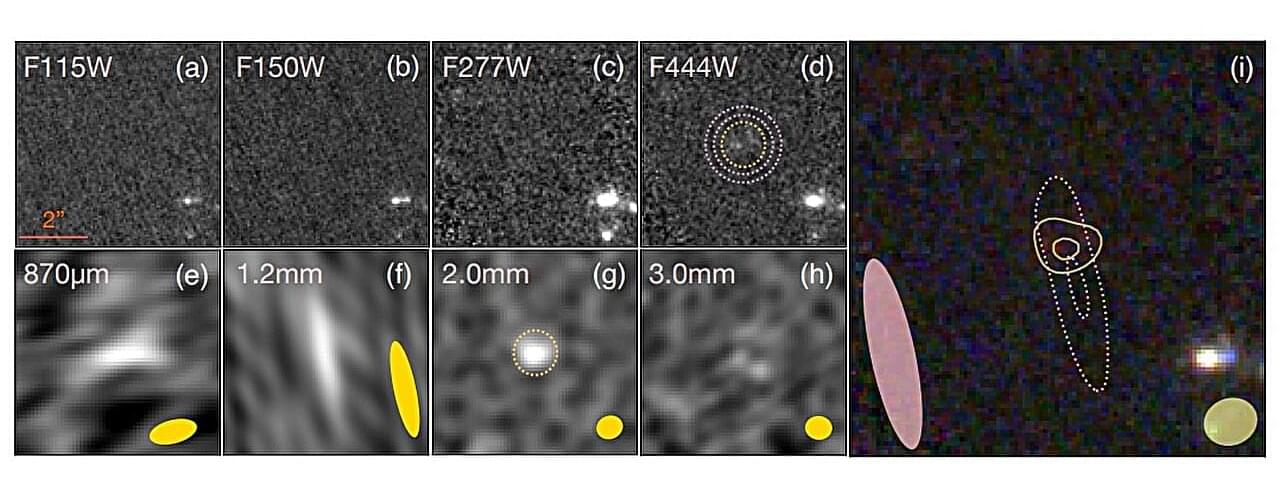If confirmed, the structure may be primordial.
Category: space – Page 10

Watching gold’s atomic structure change at 10 million times Earth’s atmospheric pressure
The inside of giant planets can reach pressures more than one million times the Earth’s atmosphere. As a result of that intense pressure, materials can adopt unexpected structures and properties. Understanding matter in this regime requires experiments that push the limits of physics in the laboratory.
In a recent paper published in Physical Review Letters, researchers at Lawrence Livermore National Laboratory (LLNL) and their collaborators conducted such experiments with gold, achieving the highest-pressure structural measurement ever made for the material. The results, which show gold switching structure at 10 million times the Earth’s atmospheric pressure, are essential for planetary modeling and fusion science.
“These experiments uncover the atomic rearrangements that occur at some of the most extreme pressures achievable in laboratory experiments,” said LLNL scientist and author Amy Coleman.

Theia and Earth were neighbors, new research suggests
About 4.5 billion years ago, the most momentous event in the history of Earth occurred: a huge celestial body called Theia collided with the young Earth. How the collision unfolded and what exactly happened afterward has not been conclusively clarified. What is certain, however, is that the size, composition, and orbit of Earth changed as a result—and that the impact marked the birth of our constant companion in space, the moon.
What kind of body was it that so dramatically altered the course of our planet’s development? How big was Theia? What was it made of? And from which part of the solar system did it hurtle toward Earth?
Finding answers to these questions is difficult. After all, Theia was completely destroyed in the collision. Nevertheless, traces of it can still be found today, for example in the composition of present-day Earth and the moon.

Airborne sensors map ammonia plumes in California’s Imperial Valley
A recent study led by scientists at NASA’s Jet Propulsion Laboratory in Southern California and the nonprofit Aerospace Corporation shows how high-resolution maps of ground-level ammonia plumes can be generated with airborne sensors, highlighting a way to better track the gas.
A key chemical ingredient of fine particulate matter—tiny particles in the air known to be harmful when inhaled—ammonia can be released through agricultural activities such as livestock farming and geothermal power generation as well as natural geothermal processes. Because it’s not systematically monitored, many sources of the pungent gas go undetected.
Published in Atmospheric Chemistry and Physics, the study focuses on a series of 2023 research flights that covered the Imperial Valley to the southeast of the Salton Sea in inland Southern California, as well as the Eastern Coachella Valley to its northwest. Prior satellite-based research has identified the Imperial Valley as a prolific source of gaseous ammonia.

Dusty star-forming galaxy at high redshift discovered
An international team of astronomers reports the discovery of a new dusty star-forming galaxy at high redshift. The newfound galaxy, designated AC-2168, was detected using the Atacama Large Millimeter/submillimeter Array (ALMA) and the Northern Extended Millimeter Array (NOEMA). The finding was detailed in a paper published Nov. 11 on the pre-print server arXiv.
The so-called dusty star-forming galaxies (DSFGs) are highly obscured galaxies undergoing a period of intense star formation, with star-formation rates reaching even 1,000 solar masses per year. They represent the most intense starbursts in the universe and are crucial to improving our understanding of galaxy formation and evolution.
However, although many DSFGs are known, their nuclear structure, which can be essential to better understand the evolution of these galaxies, is still not fully explored. Hence, finding new DSFGs and investigating them in detail could shed more light on this matter.
Scientists Reveal a Theory Suggesting Another Reality Has Been Overlapping Ours
If you think about it, physics has always advanced because of strange little clues that didn’t seem to fit. Mercury’s orbit was off by a tiny fraction; that small mismatch eventually gave us Einstein’s theory of relativity.
The ultraviolet catastrophe in blackbody radiation didn’t make sense because the crisis opened the door to quantum mechanics. So whenever something doesn’t quite add up, it’s worth paying attention. Extra dimensions enter the story because of exactly this kind of mismatch.
If extra dimensions are real, then the forces of nature might not be as separate as they look. Gravity might only appear weak because it’s spread across hidden dimensions, while the other forces are stuck to the space we can see. That would mean unification: the dream of combining all forces under one theory isn’t just possible, but natural.
Thank you for watching.
▀▀▀▀▀▀
Timestamps.
0:00 Extra Dimensions.

Key driver of extreme winds on Venus identified
Imagine the catastrophic winds of a category 5 hurricane. Now, imagine even faster winds of more than 100 meters per second, encircling the planet and whipping clouds across the sky, with no end in sight. This scenario would be astonishing on Earth, but it’s business as usual on Venus, where the atmosphere at cloud level rotates about 60 times faster than the planet itself—a phenomenon known as superrotation. In contrast, Earth’s cloud-level atmosphere rotates at about the same speed as the planet’s surface.
Prior research has explored the mechanisms driving atmospheric superrotation on Venus, but the details remain murky. New evidence from Lai and team suggests that a once-daily atmospheric tidal cycle, fueled by heat from the sun, contributes much more to the planet’s extreme winds than previously thought. The study is published in the journal AGU Advances.
Rapid atmospheric rotation often occurs on rocky planets that, like Venus, are located relatively close to their stars and rotate very slowly. On Venus, one full rotation takes 243 Earth days. Meanwhile, the atmosphere races around the planet in a mere 4 Earth days.


First full simulation of 50 qubit universal quantum computer achieved
A research team at the Jülich Supercomputing Center, together with experts from NVIDIA, has set a new record in quantum simulation: for the first time, a universal quantum computer with 50 qubits has been fully simulated—a feat achieved on Europe’s first exascale supercomputer, JUPITER, inaugurated at Forschungszentrum Jülich in September.
The result surpasses the previous world record of 48 qubits, established by Jülich researchers in 2022 on Japan’s K computer. It showcases the immense computational power of JUPITER and opens new horizons for developing and testing quantum algorithms. The research is published on the arXiv preprint server.
Quantum computer simulations are vital for developing future quantum systems. They allow researchers to verify experimental results and test new algorithms long before powerful quantum machines become reality. Among these are the Variational Quantum Eigensolver (VQE), which can model molecules and materials, and the Quantum Approximate Optimization Algorithm (QAOA), used for optimization problems in logistics, finance, and artificial intelligence.
Michael Levin: Unconventional Embodiments: model systems… (ECSU OIST)
Youtube caption.
On 11th of December 2025, Michael Levin gave a talk as part of the ECogS Conference hosted by The Embodied Cognitive Science Unit at OIST.
Title: Unconventional Embodiments: model systems and strategies for addressing mind-blindness.
Abstract: One of the most salient aspects of any agent’s environment is the question of how many, what kind, and what degree of agency exists in it. It is as relevant to biological organisms as to robots in human environments. It is also critical for scientists, philosophers, and engineers, as well as for human societies which will increasingly contain modified, synthetic, and hybrid beings of every possible description. In this talk I will argue that our evolutionary history has left us with significant mind-blindness, which makes it difficult for us to recognize minds of unfamiliar scales, problem spaces, or embodiments. I will describe our lab’s work to develop conceptual tools for recognizing and communicating with diverse intelligences. I will also present recent data from our new synthetic proto-organisms, in which we test those ideas by creating and studying the behavioral properties of beings who have not been specifically selected for them. I will conclude the talk with a speculative idea about the latent space from which novel intrinsic motivations ingress into physical, biological, and computational systems.